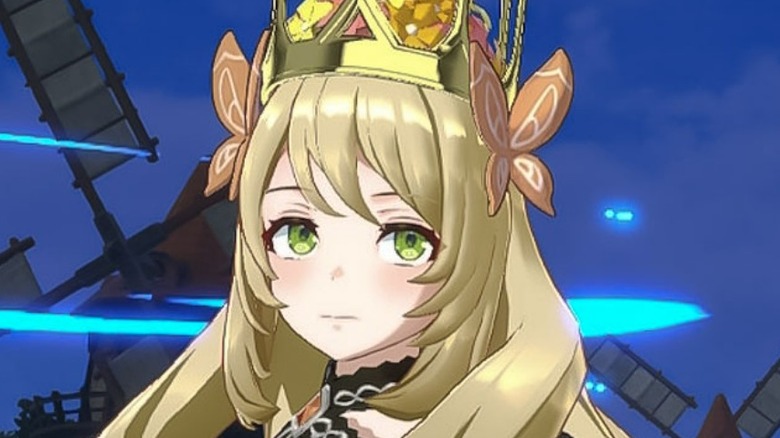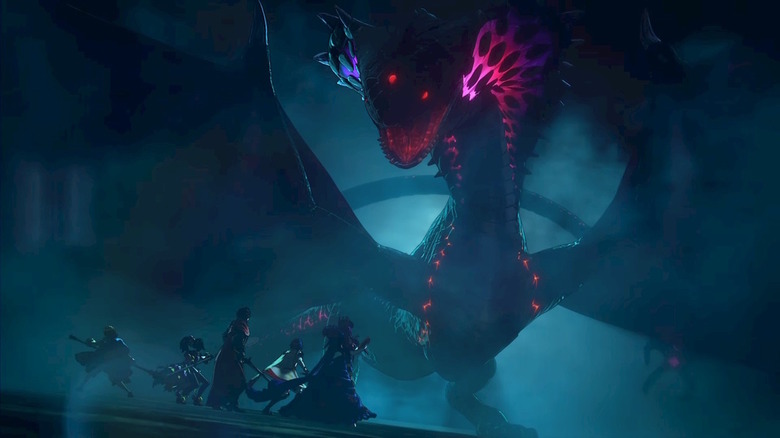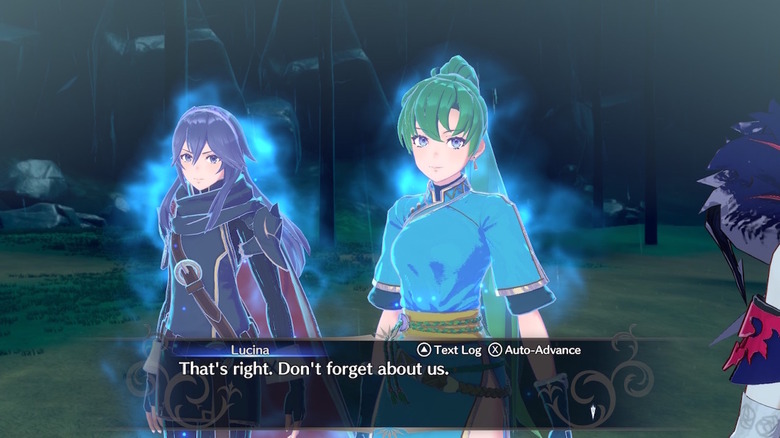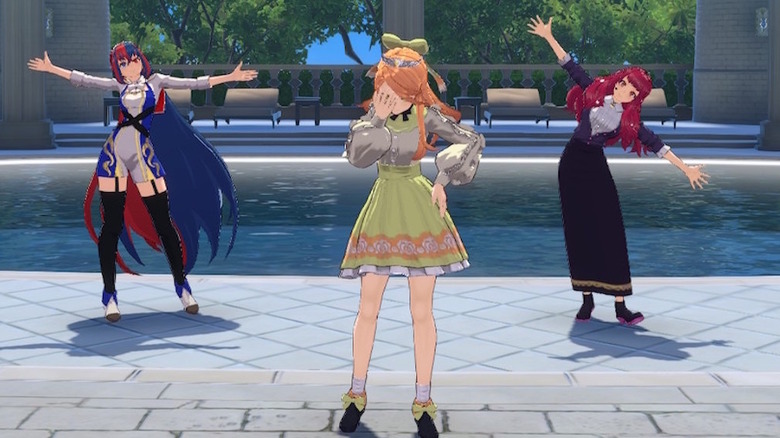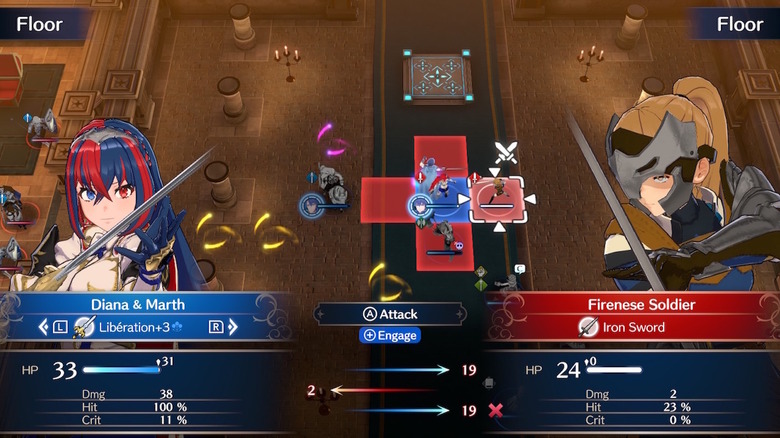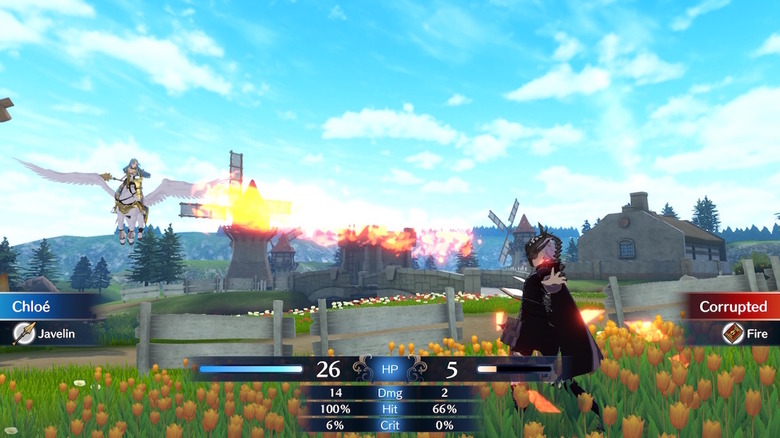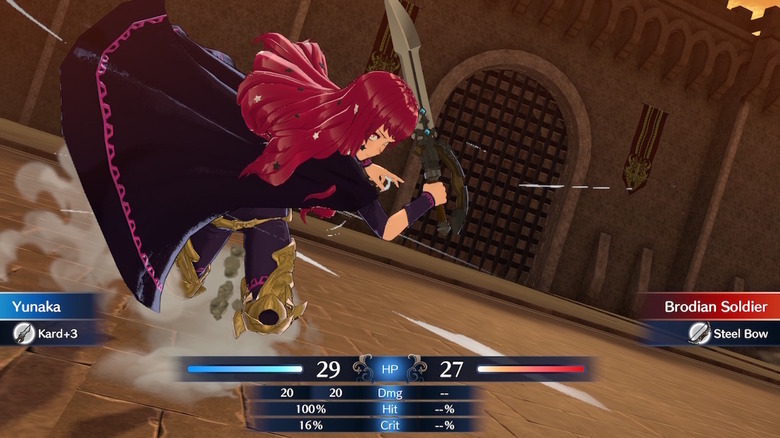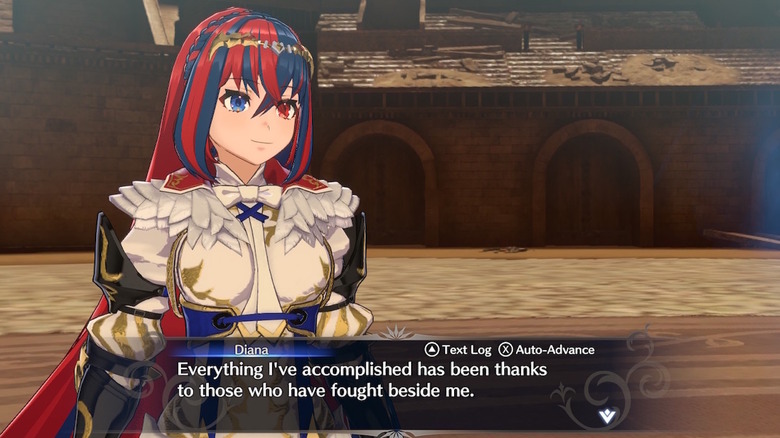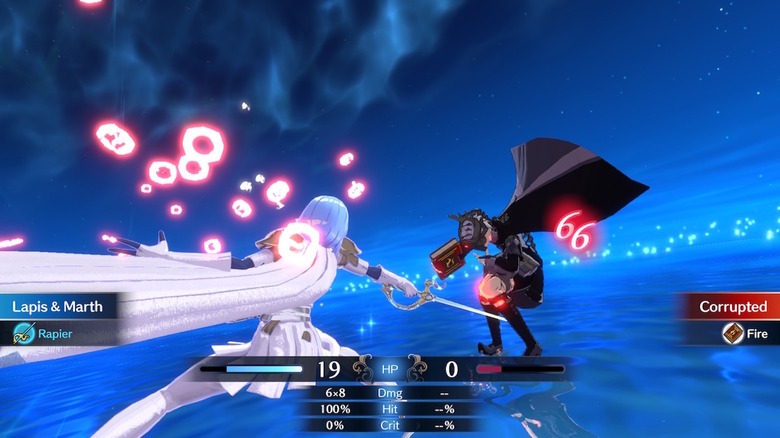Fire Emblem Engage Review: Engaging Where It Counts
- Plenty of classic “Fire Emblem” tactical goodness
- A bunch of interesting characters to choose from
- Looks fantastic, especially in motion
- Many intricacies to explore
- Story isn’t particularly compelling
- Almost too many characters
- Can be a chore to level up weaker characters
- Hit chance is often questionable
Buckle up, folks, because "Fire Emblem Engage" is brimming with things to talk about. Starting with the fact that I fell off the series a long time ago. In fact, I haven't touched one of these games since 2013's "Fire Emblem: Awakening" on the 3DS. Truth be told, I was planning on skipping out on this one as well, especially after seeing the mixed response to "Three Houses," but decided otherwise when I found out SlashGear was being given a review code for it. At least then if I found it to be a disappointment I wouldn't be paying out-of-pocket for it, right?
Turns out I was wrong — both about what I'd end up thinking about "Engage" and about how I would've felt if I paid $60 for it. To put it bluntly, the game is fantastic. It delicately balances several elements found much earlier in the series with some more modern additions, plus throws in a few of its own wrinkles to create a tactical RPG that manages to appeal to a lot of my own particular interests in very specific ways. I admittedly don't know how much of its systems have been carried over from earlier titles, but speaking from the perspective of someone who gave up on the series in its entirety for a solid decade, there's a near-perfect balance of familiar and new that's kept me, well, engaged for dozens of hours.
War still never changes
For me, the weakest element of "Fire Emblem Engage" is by far its overarching story. I'd say I'll try not to spoil anything, but I feel like anyone who's played a "Fire Emblem" game before (or is familiar with even a handful of fantasy war tropes) will see most of the twists and turns coming. Heck, the foreshadowing is laid on so thick in some places it's probable that even someone with zero knowledge of these kinds of common plot elements will be able to predict them.
Basically, your main character (canonically named "Alear" but you can name them whatever you want at the start), known as "The Divine Dragon," has been asleep for a thousand years following a battle with this game's main baddie, The Fell Dragon. Evil was stopped, The Divine Dragon was wounded and had to sleep it off, they woke up with amnesia, because of course, and so on. From there it's your job to travel all over the world of Elyos to gather up twelve magical MacGuffins in order to seal the recently reconstituted Fell Dragon away once more.
Said MacGuffins, magical Emblem Rings that contain the spirits of warriors from the history of "other worlds," do at least offer more than a reason to drive the plot forward, thankfully. Each ring represents a well-known or popular character from a handful of previous "Fire Emblem" titles, and things get interesting whenever a character wears one of these rings into battle.
Emblem, engage!
Emblem Rings are, for lack of a better term, the main gimmick of this particular game. I know that sounds kind of like an insult but I really do mean it as a compliment. Each ring (and its subsequent Emblem character) can mix up the more typical "Fire Emblem" turn-based combat in pretty unique ways and can be used to augment the characters that use them with new skills and abilities they wouldn't have access to otherwise.
On a base level, equipping someone with an Emblem Ring will make them more formidable in combat thanks to each ring's passive skills (improved dodging, increased damage with specific weapon types, etc). But beyond that, they can also "engage" with the rings to attain a sort of merged form with their connected Emblem character — granting them a flash new form, boosted stats, and even more unique abilities and special attacks.
The catch is that Engaged forms only last for a few turns before reverting back to their separate Emblem selves, and those incredibly powerful special attacks can typically only be used once per merge sequence. It's possible to build the Engage meter back up again over time, either through combat or by waiting on special tiles on a given map, but this isn't something you can use consistently for an entire skirmish so you'll need to decide when to hold off and when to power-up.
Enjoying the quiet moments
When not going to war, you'll be spending much of your time on the Somniel — The Divine Dragon's home base. At first, it's just a place to take a bit of a breather between fights, where you can gather up miscellaneous items for weapon upgrades or relationship-building cooking supplies and gifts, but as the story progresses you'll unlock a whole lot of additional functions. To the point where I feel like I've spent more time on the Somniel than on the ground fighting.
You can fish for obvious cooking materials, exercise for temporary stat boosts, give gifts to your allies to improve support levels, buy and sell items and equipment, upgrade your weapons, or unlock new casual clothing options for everyone on the Somniel. Or you can play a target-shooting mini-game, hop into the Arena for limited one-on-one training for the characters of your choice, or use the Ring Chamber to inherit Emblem skills and create less powerful (but still stat-boosting) rings for your forces.
There's even a bit of an online component that will let you set up or join a collaborative skirmish where you and other players take limited, consecutive turns controlling the same squad in an attempt to clear the map before the 10-turn limit ends. Or if you want you can also test your skills (and character builds) against AI-controlled versions of other players' teams in a pseudo-versus mode.
Plan you strategy
"Engage" sticks to the typical turn-based tactics fans of the series have become extremely familiar with. Individual units have a set number of spaces they can move based on a few factors, as well as attack ranges and weapons they can use. When attacking, you can see how much damage you're likely to mete out, whether or not you'll take damage from a counterattack, how likely you are to hit, and whether or not you might land a critical blow.
It's possible to select one or more enemies on the map to display their movement and attack ranges, but you can also press a button to reveal all areas that are within striking distance if you'd prefer to keep everyone out of harm's way (at least for their current turn). The lines that will appear between units to indicate when you're moving someone into a danger zone, showing you specifically who would be able to reach you, is another helpful touch.
The downside is that some of the series' smaller irritations are still present. If you play the "normal" way, any units lost in battle are gone for good — which in my experience just means reloading at the start of a battle and wasting a bunch of time — so I'm happy the "Casual" mode that simply removes them from the one fight is still present.
Trying to level up a character you haven't put on the field for a while can be a pain — especially as enemies keep getting stronger — and with a limited number of spots on the combat roster, you won't be using everyone all the time. Also, the hit percentages can be... questionable. Getting struck by multiple enemies in a row with a less than 20 percent chance to hit, missing several consecutive attacks with more than a 60 percent hit chance — it starts to get annoying after a while.
Tools of the trades
As with other entries in the series, "Engage" sticks to its tried-and-true weapon hierarchy trifecta. Swords win out against axes, axes beat lances, and lances are best used against swords. And when the "stronger" weapon is used it will (in most cases) break the targeted enemy's stance, removing their ability to counterattack during your turn. But on top of the basic weapon tree, you also have added wrinkles like magic being particularly effective against enemies in heavy armor (but less effective against other magic users and winged riders). Oftentimes a flying mount is easy pickings for an archer, but archers are extremely fragile at close range. And the list goes on.
And to complement all of these weapon intricacies are a number of available classes your characters may start out as or can be upgraded to using specific items. Want your slow but durable armored fighter to be more mobile? Change them to a fighter or mounted class. Feel like your healers need to do more direct fighting? Turn them into a hand-to-hand powerhouse.
Changing someone's class does reset them to level 1, but they'll keep many (sometimes all) of their current stats while gaining (or losing, depending on the class change) points elsewhere. So it's not so much a character level reset as a class level one. Meaning you can create some absolute monsters if you're patient enough to level them up a bunch before changing them over. The only tricky part is figuring out what to change them to, and in some cases how to get them the necessary weapon proficiencies (best attained via Emblem rings) to meet the requirements.
A return to form
It wasn't until I spotted a tweet from game animator and developer Aura that I realized what one of my biggest issues with previous modern "Fire Emblem" games was: The animation. A lot of the character movement and attack impacts from past 3D entries are fine, but it just wasn't as gripping as most of the much older 2D games. The animations just aren't as snappy or frenetic, and it makes battles less interesting for me overall.
"Engage," as Aura notes, seems to pull a lot of its animation inspiration (or in some cases, animations in general) from those older titles. Attacks don't just look great, they feel great, with each class of melee weapon having a distinct movement — and in some cases particular weapons getting their own standout animations as well. I particularly like the way heavier weapons like axes and hammers impact the ground after a large swing.
Even better than the regular attack animations are the spectacular critical hits, which don't occur all the time (you'll see the crit chance when preparing an attack), but are always a visual treat when they do. Between the more dynamic camera angles and the much more playful (read: unrealistic but very cool looking) character movement, I find myself relying on high-crit weapons mostly for the chance to see this kind of stuff more often, rather than the increased damage they provide.
A full-to-bursting roster
While I may have my gripes about the game's plot, I can't say the same for the characters. The former gives me no reason to care about what's happening, but the latter is what keeps pulling me forward. I may not be invested in Elyos or the inevitable defeat of The Fell Dragon (come on, that's an obvious given), but I'm extremely interested in almost all of the people that join The Divine Dragon's team.
Picking a favorite wasn't very difficult (Etie, by a wide margin), but choosing favorites after that is a much larger challenge. None of them are exactly compelling in the sense that I was hanging on their growth and development in support conversations (fighting next to each other, assisting, and other actions will increase support levels for various combat perks). However, I still really enjoyed most of the conversations and "subplots" I've been able to view so far. They may not be very deep, but plenty of fun was had playing with several common personality archetypes and character tropes. A heavily-armored author known as "The Iron Wall," a sturdy axe-wielding warrior who cries over sad parts in books, president of The Devine Dragon Fanclub — it's all so weird and charming I can't help but love it.
The problem is there are just too many characters. Sure it provides plenty of unit (and personality) variety on the field, but it didn't take long for me to run out of available roster positions. Thus forcing me to decide which of my not-as-favorite-as-Etie-but-still-great characters to bench. And that decision only gets tougher as the list inevitably balloons out even more.
Fire Emblem Engage verdict
I will freely admit I went into "Fire Emblem Engage" with a cynical outlook. Between my own hang-ups about many of the previous entries and expecting more of the same, I was expecting to find it "okay" at best. But I was very wrong and I'm glad about that.
Despite its bloated roster of too many characters I want to use and not enough space on the battlefield to use them, the lackluster and predictable plot, and the sometimes inconsistent attack accuracy, I've had an absolute blast. I can't say for sure that everyone with a similar view of the 3D side of the series will come to the same conclusion, but if you were a previous "Fire Emblem" enjoyer who ducked out when things switched over to polygons (or stopped playing for any other reason, really), "Engage" might just be worth a look anyway.
Whether or not it'll be worth the $60 for you is a personal matter, but I can honestly say that if I had paid for it myself I would be very happy with my purchase. So much of what I used to love about the series has been lovingly recreated (or updated) here, and there's enough nuance to the game's sub-surface-level systems that I think it should resonate with just about anyone who's interested in a turn-based tactical RPG, whether they're looking for something approachable or a bit more in-depth.
